![]()
![]()
![]()
Use LEFT and RIGHT arrow keys to navigate between flashcards;
Use UP and DOWN arrow keys to flip the card;
H to show hint;
A reads text to speech;
46 Cards in this Set
- Front
- Back
|
Commedia dell'arte |
Commedia dell'arte is a theatrical form characterized by improvised dialogue and a cast of colorful stock characters that emerged in northern Italy in the fifteenth century and rapidly gained popularity throughout Europe. The stock characters are identified by diamond pattern clothing. |
|
|
Thomas Hart Benton |
an American painter and muralist. Forefront of regionalist painting painted Achelous and Hercules, a 1947 mural made for a Kansas City department store |
|
|
actuality |
The arts also differ from one another, according to their mediums, in whether the items in the medium correspond to items in the world. Objects with colours and shapes are represented on canvas, and objects with colours and shapes also exist in the outside world. Even when a painting is nonrepresentational, it consists of colours and shapes, which are items in the outside world. |
|
|
medium |
In art, "medium" refers to the substance the artist uses to create his or her artwork. |
|
|
scale/size |
scale=relative size=exact Scale refers to the size of an object in relationship to another object. In art the size relationship between an object and the human body is significant. |
|
|
teleology |
The use of design or purpose as an explanation of natural phenomena |
|
|
propaganda |
information, especially of a biased or misleading nature, used to promote or publicize a particular political cause or point of view. |
|
|
cinema of attractions |
the term “cinema of attraction” can be defined as: "a cinema that displays its visibility, willing to rupture a self-enclosed fictional world for a chance to solicit the attention of the spectator." This meaning that cinema could be created, not necessarily as an entertainment function but more along the lines that a film would attract its spectators by presenting something exclusive, something unique. Term introduced by Tom Gunning. |
|
|
syntax/symbol/signifier |
syntax are the components of something (c-a-t), symbol are what the components represent (cat), signifier is the actual object (a physical cat itself, picture of a cat, etc). |
|
|
chronophotography |
Photography representing a lapse of time. Chrono-time+photography=time photography ex. The Running Horse 1878 |
|
|
genre |
a category of artistic composition, as in music or literature, characterized by similarities in form, style, or subject matter. |
|
|
readymade |
A mass produced object intended for every day use repurposed for art. |
|
|
high relief |
a sculpture that comes more than 50% off its background surface |
|
|
provenance |
Art provenance is the history of a painting, its creation and ownership, used to help establish its authenticity. Documents used for provenance include sales receipts, auction and exhibition catalogs, gallery stickers on the painting, letters from the artist, statements from people who knew the artist or circumstances of the painting. |
|
|
anachronism |
a thing belonging or appropriate to a period other than that in which it exists, especially a thing that is conspicuously old-fashioned. |
|
|
chiaroscuro |
An Italian word literally meaning "light dark", used to describe the skillful balance of light and dark in a painting, with strong contrasts to create dramatic effect. The paintings of Caravaggio and Rembrandt are good examples. |
|
|
salon |
An official art gallery in Paris hosted by the Academy beggining in 1737. Salon art is art deemed acceptable by the Academy. |
|
|
avant-garde |
French term for front of the guard. Being an avant garde means you are the the one paving the path, taking risks, and being innovative. |
|
|
canon |
The term "Western canon" denotes a body of books and, more broadly, music and art that have been traditionally accepted by Western scholars as the most important and influential in shaping Western culture. As such, it includes the "greatest works of artistic merit". |
|
|
camera obscura |
A camera obscura occurs when you are in a completely dark room with a tiny hole in the wall behind the one you're facing. The tiny hole allows light in which makes the scenery outside the room appear flipped on the wall opposite the wall with the hole. |
|
|
pediment |
A pediment is an element in classical, neoclassical and baroque architecture, and derivatives therefrom, consisting of a gable, originally of a triangular shape, placed above the horizontal structure of the entablature, typically supported by columns. Ex. the Parthenon in Greece |
|
|
myth |
an often ancient story used to teach a lesson. Often supports ancient beliefs and beginnings. |
|
|
Pop |
art based on modern popular culture and the mass media, especially as a critical or ironic comment on traditional fine art values. ex Banksy, Mr. Brainwash |
|
|
Regionalism |
Regionalism is an American realist modern artmovement that was popular during the 1930s. The artistic focus was from artists who shunned city life, and rapidly developing technological advances, to create scenes of rural life. |
|
|
NEA |
National Endowment for the Arts. Promotes artists and the arts in general. Government funding during Kennedy admin. for public art, but it was unwelcomed by many communities |
|
|
vernacular |
architecture concerned with domestic and functional rather than monumental buildings. |
|
|
Louis Daguerre |
Louis-Jacques-Mandé Daguerre was a French artist and photographer, recognized for his invention of the daguerreotype process of photography. He became known as one of the fathers of photography. |
|
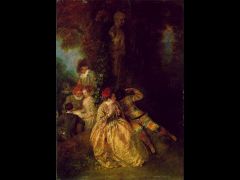
|
Jean-Antoine Watteau, Harlequin and Columbine, 1716-1718, oil on panel, 36 x 26 cm |
|
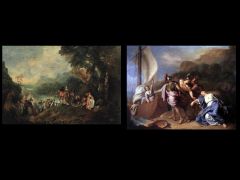
|
L: Jean-Antoine Watteau, Pilgrimage to the Island of Cythera (1717), oil on canvas, 4' 3" x 6' 4-1/2" R: Charles le Brun, Theseus Abandons Ariadne at Naxos, 1664, oil on canvas, 97 x 131 cm both similar styles, Watteau focuses on scenery rather than figures. |
|
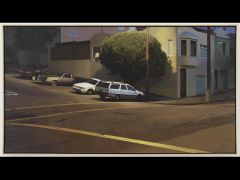
|
Robert Bechtle Four Cars on Texas Street, 2009 Oil on linen, 36 x 66 inches (91.4 x 167.6 cm) |
|
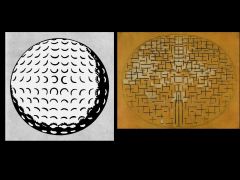
|
L: Roy Lichtenstein, Golf Ball, 1962, oil on canvas, 32 x 32 R: Piet Mondrian, Sea in Starlight, 1914, charcoal, white watercolor on paper, 87.9 cm high Similar composition, monochromatic, abstractions of actuality |
|
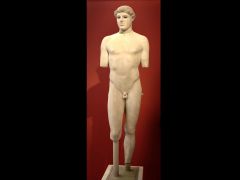
|
Kritios Boy (c. 480 BCE) First time human sculptures were posed in natural stances. Made around same time as Parthenon |
|

|
Eadweard Muybridge, The Horse in Motion, 1878 Bet with Stanford to see if horses come completely off the ground when running. Chronophotography: series of cameras set off by motion |
|
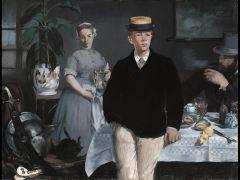
|
Edouard Manet Luncheon in the Studio, 1868 Oil on canvas, 118 x 154 cm |
|

|
Woman in Blue Reading a Letter, 1663-1664 Oil on canvas, 18 5/16 x 15 3/8 in. (49.6 x 40.3 cm) Johannes Vermeer Dutch painter, not famous till well after death, simple limited colors |
|

|
Damien Hirst, Some Comfort Gained from the Acceptance of the Inherent Lies in Everything, 1996 Steel, glass, cows, and formaldehyde solution (12 tanks) humourus, impressionist/contemporary artists |
|

|
Marcel Duchamp/R. Mutt, Fountain, 1917 readymade object, questions what is art |
|
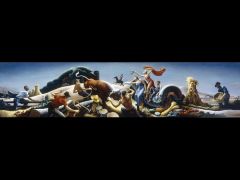
|
Thomas Hart Benton Achelous and Hercules (1947) Mid West Regionalist painter, huge mural for a Kansas City shopping center, comp. is similar to Parthenon pediments |
|

|
Chris Ofili, The Holy Virgin Mary, 1996 Paper collage, oil paint, glitter, polyester resin, map pins, and elephant dung on linen, 243.8 x 182.9 cm |
|
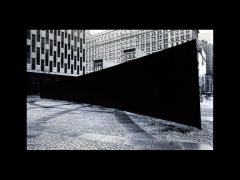
|
Richard Serra, Tilted Arc, 1981 Unwelcomed by public (blocked walkway, unattractive), funded by NEA |
|

|
Norman Rockwell, The Conoisseur, January 1962 Rockwell is critiquing Pollock, question what is art, considered an illustrator rather than artist |
|

|
Parthenon, east pediment, Birth of Athena, reclining male from rear reclined to fit scale but also fit in triangle, circumnavigable, high relief |
|

|
David Hensel One Day Closer to Paradise, 2006 Slate and boxwood base statue submitted to Royal Academy, only base was accepted, questions what defines art |
|

|
Lucas Cranach I Adam and Eve, 1526 Oil on panel redone many times, Valentino dress in 2014, turns a 2D painting into 3D object |
|
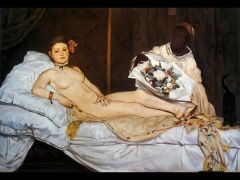
|
Edouard Manet, Olympia, oil on canvas, 1863 controversial, she's a prostitute, confronts viewer |
|
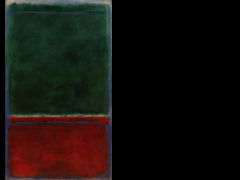
|
Mark Rothko, Untitled (green and maroon), 1953, oil on canvas impressionist, questions what is art, non objective |

